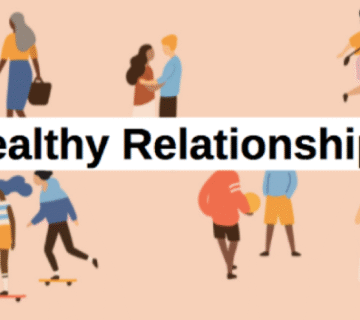Friendship and sex relationship—sometimes called sexual friendship or sex friendship—has transformed from a taboo subject to a major topic in relationship research and cultural conversation. As traditional boundaries between platonic and romantic relationships blur, more people are exploring sexual intimacy within their friendships. But what does it mean to have a friendship with sex? Is this blend of emotional and physical closeness a pathway to deeper connection—or a shortcut to heartbreak and confusion? This in-depth, original article answers these questions with evidence, real stories, and practical advice, all naturally optimized for Google.
Primary keywords used throughout: friendship and sex relationship, sexual friendship, sex friendship, friends sex, sex between friends, intimacy in friendship, friend with sex, best friends have sex, sex in friendship.
Table of Contents
-
Introduction: The Evolution of Friendship and Sex
-
What Is a Friendship and Sex Relationship?
-
Why Are People Blending Sex and Friendship?
-
Key Benefits of Sexual Friendship
-
Real Risks and Downsides
-
What Science Says: Research Findings
-
Practical Guidelines for Navigating Sexual Friendship
-
Social & Emotional Myths Debunked
-
Stories From the Real World
-
For Deeper Learning: High-Authority Resource
-
Conclusion
1. Introduction: The Evolution of Friendship and Sex
Cultural narratives have long separated friendship (emotional but non-sexual) and romantic/sexual relationships (intense, exclusive, sexual). But recent research, media, and lived experience reveal much more overlap: friends sometimes become lovers—either as a one-off, through a friends-with-benefits arrangement, or as a lasting “sexual friendship”.
2. What Is a Friendship and Sex Relationship?
A friendship and sex relationship exists when friends decide, by mutual agreement, to add sex or other forms of physical intimacy to their connection. This may or may not include romance, exclusive commitment, or the desire for a “traditional” relationship label.
Types of friendship and sex relationships:
-
One-time sexual encounters between friends
-
Recurring sexual friendships (friends with benefits)
-
Best friends who transition to intimate partners
-
Romantic relationships that arise from friendship
Key traits:
-
Trust and emotional intimacy come first
-
Sex is added for pleasure, exploration, or curiosity—not obligation
-
Boundaries are set mutually, and may change over time
-
The core friendship often remains even if sexual activity ends
3. Why Are People Blending Sex and Friendship?
There are many reasons people seek sexual intimacy within a friendship:
-
Comfort and Safety: Friends already trust each other and can be more open about needs, fears, and boundaries.
-
Convenience: No need to “start over” with new partners—sexual friends skip awkward icebreakers.
-
Emotional Security: Compared to strangers or casual dates, friends offer built-in support.
-
Sexual Exploration: The opportunity to try new things in a judgment-free zone.
-
Changing Social Norms: Greater acceptance of variations in relationships makes sexual friendship more visible and accepted.
4. Key Benefits of Sexual Friendship
Scientific investigations and firsthand accounts reveal several consistent upsides:
| Benefit | Description |
|---|---|
| Strengthened Bond | Over 75% of people surveyed felt more connected after sex with a close friend |
| Open Communication | More honesty and comfort talking about sexual needs |
| Playful, Low-Pressure Sex | Sexual friendship often involves fun, experimentation, and laughter instead of anxiety |
| Mutual Support | Intimacy may build deeper emotional closeness |
| Flexible Boundaries | Freedom to negotiate exclusivity or define the relationship by personal needs, not social scripts |
Many friendships continue—even thrive—after the sexual aspect ends, especially if expectations are clear from the start.
5. Real Risks and Downsides
Despite the upside, sexual friendship comes with genuine challenges:
-
Jealousy and Insecurity: If one friend develops deeper feelings, tension and confusion can arise.
-
Ambiguity: Vagueness about what the relationship “means” can trigger conflict or frustration.
-
Impact on Other Relationships: New romantic partners may feel threatened by a close sexual friendship.
-
Gossip & Social Stigma: Friend groups may react with judgment or skepticism.
-
Potential for Loss: Misaligned expectations or emotional fallout can sometimes end the friendship entirely.
Communication and boundary-setting are critical to managing these risks.

6. What Science Says: Research Findings
Sexual friendship is far more common—and less destructive—than old stereotypes would suggest. Key findings include:
-
Greater Relationship Satisfaction: Friends who integrate sexual intimacy often report higher relationship satisfaction, especially when friendship is highly valued.
-
Most Romantic Relationships Start as Friendships: Two-thirds of couples, according to recent studies, began their romantic journey as friends.
-
Sex Doesn’t Necessarily Ruin Friendship: A majority (up to 76%) say sex with a friend improved or did not harm the friendship if intentions were communicated.
-
Prevalence Across Genders and Orientations: Both men and women equally report initiating or enjoying sexual friendship, with even higher rates in LGBTQ+ communities.
-
Differences in Attachment Styles: People with secure attachment and open communication thrive more in sexual friendships than those with avoidant or anxious tendencies.
7. Practical Guidelines for Navigating Sexual Friendship
If you’re considering a sexual friendship, here’s how to reduce risks and maximize rewards:
1. Be Radically Honest
-
State intentions initially and revisit them regularly: Is this about fun, romance, curiosity… or something more?
2. Set and Respect Boundaries
-
Define exclusivity, emotional support, frequency of encounters, and what you’ll tell other friends or partners.
3. Prioritize Communication
-
Schedule honest check-ins—share feelings, new concerns, or changes in desires.
4. Make Sexual Health a Priority
-
Use protection, share STI info, and don’t let trust replace safe practices.
5. Plan for Change
-
Create an “exit strategy” if feelings change or someone wants to pause/end sexual contact, to preserve the friendship.
6. Respect Privacy & Social Dynamics
-
Agree on how open (or discreet) to be about your arrangement, especially with mutual friends.
8. Social & Emotional Myths Debunked
| Myth | Reality |
|---|---|
| Sex always ruins friendship | With clear communication, most sexual friendships survive or even thrive |
| Only men want sexual friendships | All genders can desire and enjoy sexual friendship; attachment is personal |
| Sexual friends never become couples | A majority of lasting couples began as friends first |
| Sex friendship is only for youth | People of all ages and backgrounds engage in sexual friendships |
| Sexual friendship is “just physical” | Many report deeper intimacy, trust, and emotional growth |
9. Stories From the Real World
-
“We started as best friends in college and ended up sleeping together in our late twenties. It was both freeing and complicated—we laughed, argued, and experimented. Eventually, he met someone new, and we transitioned back to friendship, but honestly, I feel more connected to him now than ever.”
-
“We agreed early: No drama, total honesty. Whenever one of us felt confused, we’d talk—sometimes awkwardly! That’s what kept us close, through breakups, new partners, and eventually, going back to just being friends.”
-
“I fell for my friend, but he didn’t feel the same. We paused intimacy, took space, and after several months, we became friends again. It was tough, but I learned that real friendship isn’t destroyed by discomfort—just secrecy.”
10. For Deeper Learning: High-Authority Resource
To read expert analyses, evidence, and practical tips for healthy friendships that include sex, explore Planned Parenthood’s comprehensive guide to sex and friendship (high-authority, globally respected).
Read More: Sexual Friendship: Benefits, Risks, and How to Build a Healthy Relationship
11. Conclusion
Today’s friendship and sex relationships are as multifaceted as the people who pursue them. While blending sex and friendship can fuel connection, growth, and fun, it also brings real challenges—especially for those unwilling to articulate their needs and limits. The outcome overwhelmingly depends on clear communication, mutual respect, and emotional honesty. Most importantly: there’s no single “right” way to blend friendship and sex. Each relationship requires its own boundaries, risks, and—if handled with care—its own rewards.








[…] Read More: Friendship and Sex Relationship: How Sexual Friendship Shapes Connections, Risks, and Fulfillment […]
[…] Read More: Friendship and Sex Relationship: How Sexual Friendship Shapes Connections, Risks, and Fulfillment […]